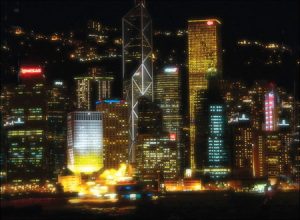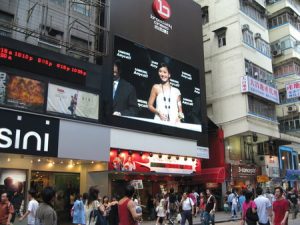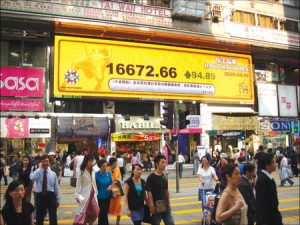Electric Signs
Hong Kong Harbors EDS Networks
Hong Kong’s JM Network takes a different approach to electronic, outdoor advertising.
Published
17 years agoon
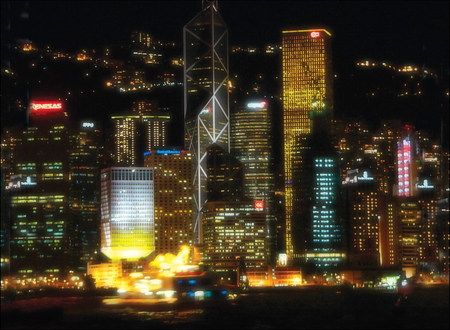
Hong Kong, the Gateway to the East, is a dynamic, international center that balances Chinese heritage with Western culture’s ongoing influences. Since 1997, it’s been part of the People’s Republic of China, but the city still retains evidence of its former British rule – English remains one of its official languages.
Conventional signage, such as neon, can be found throughout all of Hong Kong’s cities, but large, outdoor, LED displays have begun to appear.
To understand the extent to which electronic digital sign (EDS) networks thrive overseas, ST interviewed Ronald Lo of JM Network, one of Hong Kong’s predominant companies that sets up and maintains LED sign networks. The company (established in 2003), uses several approaches to electronic, outdoor advertising within an urban center. Some dramatically differ from U.S. practices.
Hong Kong style
Lo said, “Our company is a full-service provider of the building and managing of an electronic, advertising-display network. We design our own electronic billboards, fabricate them to our specifications, place them in optimal locations throughout Hong Kong, book all the advertising on them and manage their operations on a 24/7 basis.”
AdvertisementHaving conducted a traffic study of its sign locations, JM Network estimates its sign network reaches at least 1.5 million people per day. The company operates eight LED outdoor screens, with plans to continually add screens to the electronic sign network. All JM signs are building placements – some are on the side of a building, and others are on the corner (the bullnose), where the sign intersects two passing streets.
A Hong Kong sign network differs from U.S. counterparts, where a strong, off-premise sign program comprises print and electronic billboards, which are mounted roadside. In Hong Kong, few roadside billboards can be found.
Hong Kong’s electronic signage is primarily found in the inner city, where most of the city’s population lives and works. Here, digital signs hang on the sides of buildings, usually parallel to main roads.
Also, Hong Kong’s electronic signs possess a sound component, which presents a true, audiovisual experience for passersby.
U. S. outdoor-media companies believe electronic signage dramatically differs from television, and, resultingly, they create different content for outdoor LED screens. In Hong Kong, the outdoor-advertising community views electronic displays as giant television screens and plans commercial content accordingly.
However, both the United States and Hong Kong place electronic signs in high-traffic, visible locations to maximize exposure. Lo said, “Our electronic signs are placed on buildings within inner-city locations, usually along very congested streets, where many pedestrians and vehicles pass the sign.”
AdvertisementOnce the company finds a preferred location, it usually deals with the building owners (real-estate developers) and the city transport and building department, which grant permits to build and install electronic signs.
Most JM screens are manufactured by Lighthouse (Hong Kong), except for the Central sign, which is a Mitsubishi Diamond Vision display. JM’s technical team manages and supports each sign installation. Other Hong Kong system integrators help with structural calculations and designs submitted to the building department, but JM provides direction and guidance for each, entire project.
As for installing LED displays, Lo said, “We are challenged by the original road layouts, and the narrow roads leading to these buildings need to be clear at all times. Thus, transporting the panels to the facade and installing them is quite stressful. We do these installations at night, and get it done quickly, usually around a week. As with most sign installations, we do preparation work offsite. When we arrive for the final install, it’s a smooth and quick operation.”
Most of Hong Kong’s sign codes were established by British law, and LED signage didn’t exist when those codes were written. Currently, LED signs are considered “light moving fixtures” and regulated accordingly.
Sign permits are issued on a case-by-case basis, depending on location. In some instances, city officials may deem an electronic sign a distraction and not grant approvals. “In most cases,” Lo said, “we get approvals on our locations, which has allowed our electronic sign network to flourish.”
Advertisement
Sound awareness
Sound-based, outdoor, electronic advertising has become standard in Hong Kong. Lo said most content JM handles contains sound. “We’ve even had customers who send staff out to the signs with their advertising on it to check audio levels. When it’s not to their satisfaction, they call us with requests to boost the volume.”
Surprisingly, Lo said large LED signs don’t always create the greatest impact. One of the smaller signs within the company’s inven¬tory has produced more revenue than its larger counterparts.
In most cases, customers bring their advertising content in a Beta SP-PAL format (PAL is the European equivalent of NTSC). “They don’t necessarily understand format, style, aspect ratio or high resolution,” Lo said. “They know they want outdoor advertising, and they see us as the path to get there. They expect us to properly develop and place their content on our sign network in a ready-to-go state.”
JM runs a continuous, one-hour loop all “day” (16 hours). Its typical advertising package is a 180-second space, which can be used as the customer wishes. For example, the space can be divided into three, 60-second spots or nine, 20-second spots.
See spots run
Spots can run on as many, or as few, LED screens as the customer wants within the network. Many location-specific customers use only part of the network, but they’re now seeing the value of using the entire system all at once.
“A similarity between our screens and American LED screen networks is educating our sign customers about how the network can commu¬nicate with the public,” Lo said. “The more comfortable our customers are with our electronic signs, the more willing they are to invest in them to their fullest extent.”
Content variety, along with advertising, also helps attract atten¬tion. JM has instituted such content “features” as:
• News on the half hour. To provide more information as a public service, JM has collaborated with the Hong Kong television news service Television Broadcasts Ltd., which presents five-minute, TV news summaries every half hour.
• Stock exchange index. JM broad¬casts, in real time, Hong Kong’s Hang Seng Index, which drives the city’s economy. Lo said, “We always get on the local newspa¬pers, because they usually include a picture of the index.”
• Art moments. “Canvas” presents brief animation or graphics.
• Experiential advertising. JM has developed a mutually exclusive rela¬tionship through a program called CommonSpace, which advertises a product or brand on the sign, and also manages, under the sign, the retail store where passersby can purchase the item or brand.
Exchange experience
JM’s outdoor-advertising program has converged outdoor advertising with point-of-purchase (POP) buying to translate advertising into immediate sales.
Lo pointed out, “Our first CommonSpace site integrates two, outdoor, LED signs and a physical store. We see CommonSpace as a way of transforming traditional outdoor advertising from a one-way to a two-way communication program. Advertisers and passersby can interact with each other to enable an ‘Experience Exchange,’ CommonSpace’s motto. This is similar to a ‘pop-up’ store in the United States, or temporary, retail stores that open up around certain holidays or seasonal events (Halloween and Christmas) to feed on impulse buying for gift or personal purchases.”
JM initiated the CommonSpace program in 2006. Samsung, the program’s first customer, rented the sign, with its matching retail store, for five weeks to promote to-be-launched electronic products. Triumph, a lingerie company, also rented the venue (the sign plus the retail store) and also hired lingerie models to walk around dispensing flowers to the public.
JM is no stranger to unique, outdoor projects. In 2003, the company had partnered with the New York City Metropolitan Transit Authority and Clear Channel Outdoor to pioneer an electronic outdoor-advertising project in Manhattan’s Upper West Side. The project, the Urban Display Network (UDN), deployed 80, 2 3 3-ft. Lighthouse LED screens atop New York City subway entrances (see ST, January 2003, page 84). That project eventually ended in 2005, but Lo predicts JM will initiate a similar program in Hong Kong or mainland China when the opportunity presents itself.
21st-century sign networks
Lo sees nothing but golden opportunities to expand his electronic-advertising network’s presence into other parts of Hong Kong, Macau (an Asian Las Vegas), and major Chinese cities. He envisions large building signs, media facades and a continuation of the UDN, which began in Manhattan’s Upper West Side.
Lo realizes that setting up an electronic, outdoor-advertising network is a technical feat, but its popularity depends on the public’s receptivity to electronic signage. Whether a sign network is placed in Hong Kong, China or the United States, it must attract viewers’ atten¬tion. The network providers must educate clients and the public that electronic, outdoor displays comprise more than merely ads on a board. An electronic network that displays extra value via entertainment, community focus, news and experiential retail is truly a sign of the 21st Century.
Louis M. Brill is a journalist and consultant for high-tech entertain¬ment and media communications. He can be reached at (415) 664-0694 or louisbrill@sbcglobal.net.

SPONSORED VIDEO
Introducing the Sign Industry Podcast
The Sign Industry Podcast is a platform for every sign person out there — from the old-timers who bent neon and hand-lettered boats to those venturing into new technologies — we want to get their stories out for everyone to hear. Come join us and listen to stories, learn tricks or techniques, and get insights of what’s to come. We are the world’s second oldest profession. The folks who started the world’s oldest profession needed a sign.
You may like

Neon Museum of Saint Louis Holding Fundraiser

The Seasons of Sign Entrepreneurship

This Sign Company Absolutely Hates Price Shoppers
Subscribe

Bulletins
Get the most important news and business ideas from Signs of the Times magazine's news bulletin.
Most Popular
-

 Paula Fargo2 weeks ago
Paula Fargo2 weeks ago5 Reasons to Sell a Sign Company Plus 6 Options
-

 Real Deal1 week ago
Real Deal1 week agoA Woman Sign Company Owner Confronts a Sexist Wholesaler
-

 Photo Gallery2 weeks ago
Photo Gallery2 weeks ago21 Larry Albright Plasma Globes, Crackle Tubes and More
-

 Projects1 week ago
Projects1 week agoGraphics Turn an Eyesore Cooler Into a Showpiece Promo in Historic Plaza
-

 Business Management1 week ago
Business Management1 week ago3 Things Print Pros Must Do to Build Stronger Relationships in the Interiors Market
-

 News1 day ago
News1 day ago2024 Sign Contest Open for Submission
-

 News1 week ago
News1 week agoPattison ID New Name of Five Companies
-
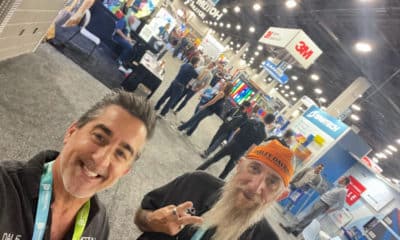
 Dale Salamacha5 days ago
Dale Salamacha5 days agoWhat Makes the Perfect Sign Business Partnership
